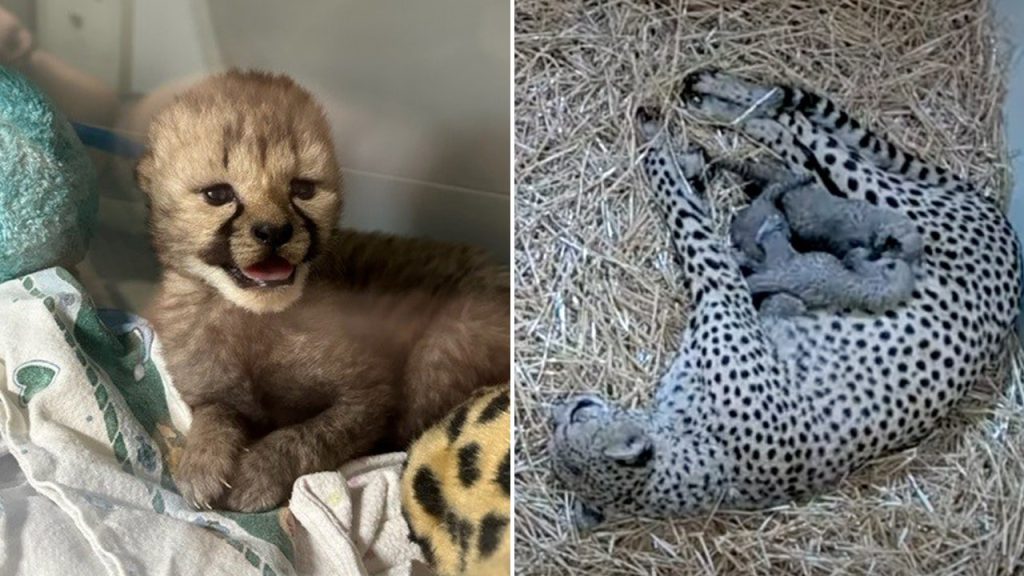A baby cheetah at the Cincinnati Zoo & Botanical Garden has found a new family after being born as the only offspring to his biological mother, putting him at risk. The zoo’s staff moved him to the care of another mother, Etosha, who had recently given birth to two cubs. The cub arrived from Oregon and was placed in the zoo’s off-site breeding center. The coordination with other cheetah breeding centers ensures that litters are born semi-close together to facilitate potential cross-fostering situations. The foster mother has responded positively to the single cub, and nursing and attentive care have been observed.
The staff at the Cincinnati Zoo is pleased with the successful integration of the single cub into the litter of the foster mother, Etosha, and her two biological cubs. The cub was initially placed in an incubator before being added to the litter and has since been observed nursing and being cared for by the mother. The zoo reported that the mom and all three cubs are doing well, nursing and gaining weight. The zoo is allowing Lighthawk Conservation Flying, the company that transported the cub from Oregon to name the new addition, although the zoo is involved in cheetah conservation efforts to support the endangered species.
Cheetahs are currently endangered, with their population decreasing from 100,000 to 7,000 since 1900. The Cincinnati Zoo has been working with partners in Africa for decades to support cheetah conservation efforts. Despite the private care being given to the cheetah cubs, visitors to the zoo can still observe other cheetahs daily. The successful integration of the single cub into a new litter has been a positive outcome for the zoo’s cheetah breeding program. The zoo’s coordination with other breeding centers ensures that cubs born are as close in age as possible to facilitate fostering situations.
The cheetah cub was placed in the care of a new mother after being born as a singleton, which posed a risk to his survival due to lack of stimulation for lactation. The staff at the zoo monitored the cub’s integration into the foster mother’s litter and reported positive responses from both the mother and the cub. The mom and all three cubs are doing well, nursing and gaining weight, indicating a successful transition for the lone cub. The zoo’s involvement in cheetah conservation efforts highlights the importance of protecting the endangered species and ensuring their survival in the future.
The zoo’s breeding program for cheetahs involves coordination with other breeding centers to ensure the birth of cubs close in age, facilitating potential fostering situations if needed. The successful integration of the single cub into a new litter has been a positive outcome for the zoo’s cheetah breeding efforts. The ongoing collaboration with partners in Africa for cheetah conservation efforts showcases the zoo’s commitment to preserving the endangered species. Despite the private care being given to the cheetah cubs, visitors to the zoo can still observe other cheetahs daily. The naming of the new addition by Lighthawk Conservation Flying reflects the collaborative efforts involved in the care and conservation of cheetahs.













